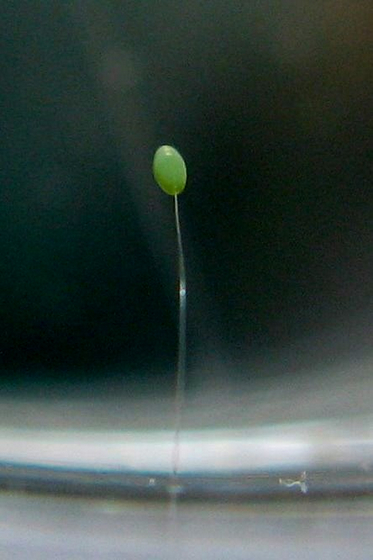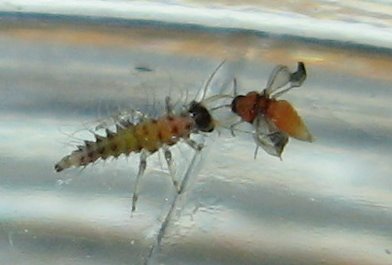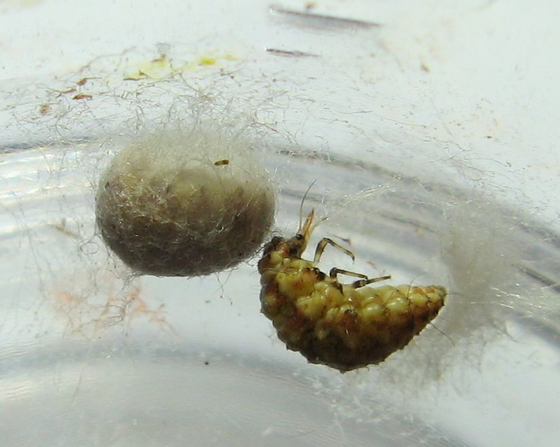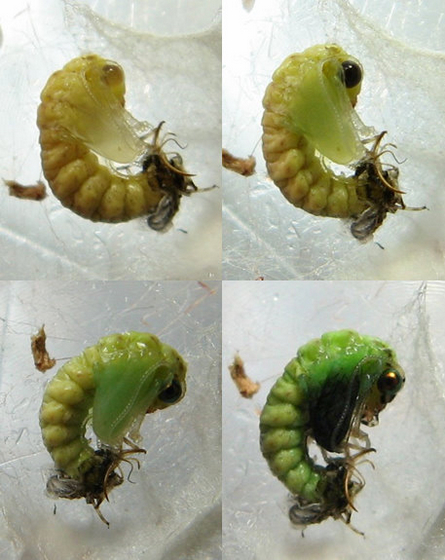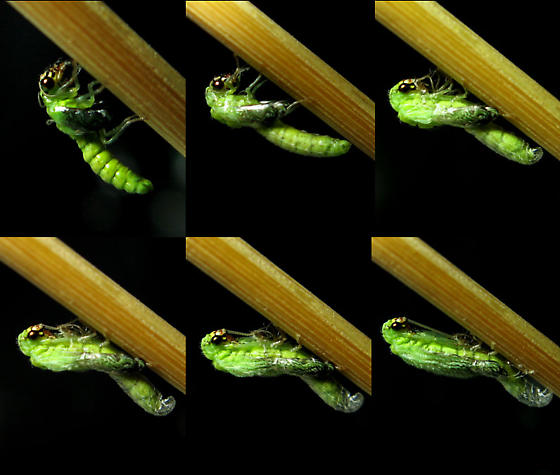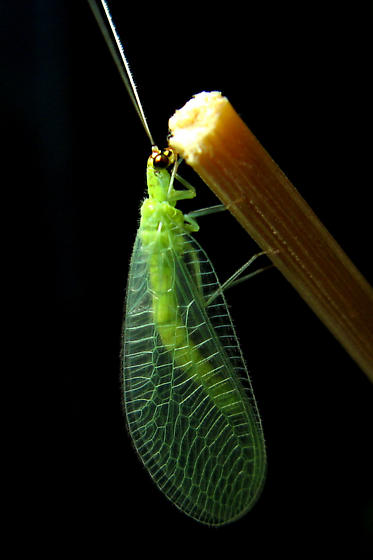Reproduction
The Chrysopa oculata have an annual
reproductive cycle, which is complete with metamorphosis (egg,
larva, pupa, and adult stages).The eggs may be laid in the
water, soil, or on plants. Eggs may or may not have stalks. The
larvae are predaceous. Pupation occurs in silken cocoons. Adults
emerge one or two weeks later (Dunn 1996).
The reproductive behavior of Chrysopa oculata
females displays a dependence on diet. Females remain unmated
when maintained on a regimen of sugar and water. Comparatively,
females mate and produce fertile eggs when given pea
aphids
prior to pairing. Males do not require a specialized diet around
mating season and can keep a diet of sugar and water in order to
produce fertile matings. The survival of the eggs of the
Chrysopa oculata is determined by factors such as cannibalism
and predation. One way in which it does this is by laying eggs
with stalks (Tauber and Tauber 1973). The first instar larvae of Chrysopa
oculata cannibalize more eggs without stalks than those with. In
an experiment, unfed males and females of C. oculata avoided
feeding on eggs with stalks, but readily cannibalized those
without. The degree of cannibalism is similar in both sexes.
Although predation of eggs with and without stalks by hungry
adult coccinellids (beetles) is high, the stalks protect the
eggs to some extent. The vulnerability of singly laid chrysopid
eggs appears to be reduced mainly by their camouflage color and
long hyaline stems. Females seem to be able to recognize
conspecific eggs by slowly moving their palps along the stalk.
Apart from the protective function against predation, stalks may
provide some degree of protection against mechanical injury and
overheating (Ruzicka 1997).
